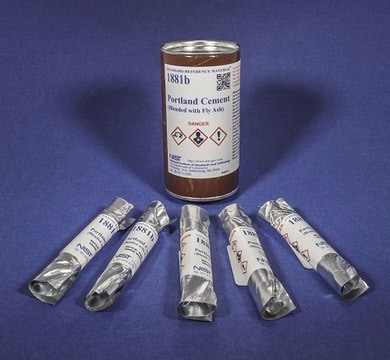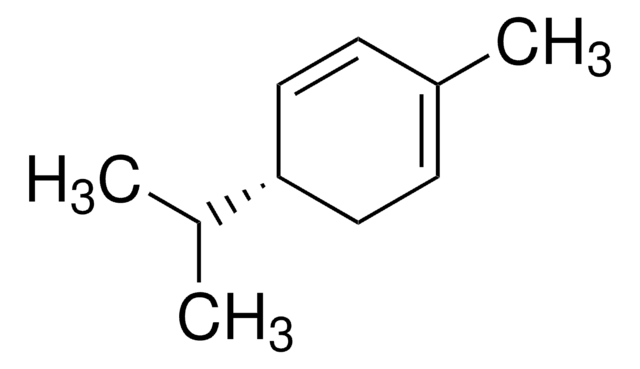95656
Eucalyptol
certified reference material, TraceCERT®
Synonym(s):
1,3,3-Trimethyl-2-oxabicyclo[2.2.2]octane, 1,8-Cineole, 1,8-Epoxy-p-menthane
About This Item
Recommended Products
grade
certified reference material
TraceCERT®
Quality Level
product line
TraceCERT®
shelf life
limited shelf life, expiry date on the label
technique(s)
HPLC: suitable
gas chromatography (GC): suitable
refractive index
n20/D 1.457 (lit.)
bp
176-177 °C (lit.)
mp
1-2 °C (lit.)
density
0.921 g/mL at 25 °C (lit.)
application(s)
food and beverages
format
neat
storage temp.
2-8°C
SMILES string
C[C@]12CC[C@H](CC1)C(C)(C)O2
InChI
1S/C10H18O/c1-9(2)8-4-6-10(3,11-9)7-5-8/h8H,4-7H2,1-3H3/t8-,10+
InChI key
WEEGYLXZBRQIMU-WAAGHKOSSA-N
Looking for similar products? Visit Product Comparison Guide
General description
Certified content by quantitative NMR incl. uncertainty and expiry date are given on the certificate.
Download your certificate at: http://www.sigma-aldrich.com.
Application
Packaging
Legal Information
Not finding the right product?
Try our Product Selector Tool.
Signal Word
Warning
Hazard Statements
Precautionary Statements
Hazard Classifications
Flam. Liq. 3 - Skin Sens. 1
Storage Class Code
3 - Flammable liquids
WGK
WGK 2
Flash Point(F)
125.6 °F - closed cup
Flash Point(C)
52 °C - closed cup
Certificates of Analysis (COA)
Search for Certificates of Analysis (COA) by entering the products Lot/Batch Number. Lot and Batch Numbers can be found on a product’s label following the words ‘Lot’ or ‘Batch’.
Already Own This Product?
Find documentation for the products that you have recently purchased in the Document Library.
Customers Also Viewed
Active Filters
Our team of scientists has experience in all areas of research including Life Science, Material Science, Chemical Synthesis, Chromatography, Analytical and many others.
Contact Technical Service














